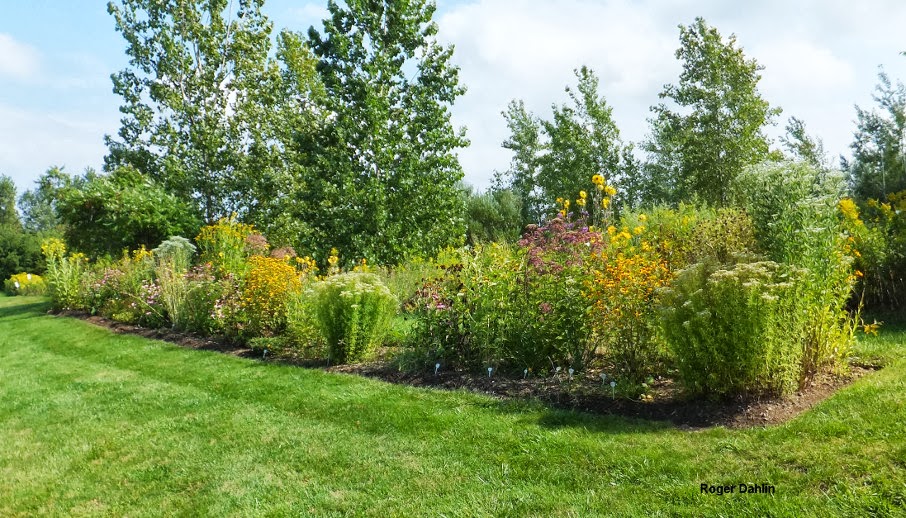By Kristy Belaney
Fall in Northeast Ohio can be pretty spectacular. The sun is usually shining, the air is crisp and light free from the cloak of humidity and the leaves put on a breathtaking show of color for all to admire. Because of this, fall is a popular time with gardeners as they take to their landscapes for one last hoorah before the snow falls.
The mild weather is perfect for planting new trees, shrubs and perennials. The combination of extra rainfall along with the warm soil allows new plantings to develop strong root systems which will give their above ground growth a head start in the spring. Fall is also a great time to divide any existing perennials you may have such as ornamental grasses, iris, daylilies, and coneflowers.
Fall gardening does have some merit. But before you go cutting down every spent blossom, here are some things to consider. Besides planting and dividing, little else needs done.
The Ghosts of Flowers are Beautiful in Their Own Right
 |
| New York Ironweed |
If you are one of those gardeners who sees this period of transition from summer into fall as a sad one, take heart. Fading flowers and seed heads can add an entirely new dimension to your landscape. The shapes and textures of them can be downright striking in their own right and the warmer tones of the browns and golds they share compliment the earthy colors of the season.
 |
| Zinnia |
 |
Cup Plant
|
Untouched Plants Provide Food and Shelter
Plants such as Purple Coneflowers and Black Eyed Susans should always be left alone in the fall with their stems in tact. These plants and many others provide food for birds and wildlife throughout the winter when sources are scarce. Many insects, including lady beetles, spiders and a few butterflies take shelter in leaf litter and other organic debris in the fall. Other moths and butterflies are in their pupa stage during this time of the season and unnecessary raking and pruning could destroy their cocoons. Ants go deeper into their nests and close up the exit holes with soil. Some solitary bees use brush piles to hibernate in and frogs and toads will seek out logs and dead ground cover to over winter. These amazing creatures do not have the luxury of turning up a thermostat when it gets chilly as we do, so don't take away their humble shelters!
 |
| Purple Coneflower |
Standing Perennials act as Insulator Conductors
And it isn't just the bugs that will benefit from this relaxed approach. As snow collects around the standing perennials, the insulation factor will kick in and protect the plants root system, giving it a better chance of survival. This ensures a vibrant garden for you in the springtime, which is something to look forward to.

Relax
As this post comes to a close and I glance outside at the first falling snow, I realize it may have come a bit too late for some. If you already swept your fall garden clean this year, put yourself at ease. Next year you can just sit back, wrapped up in your favorite sweater with a cup of hot chocolate or apple cider, gazing at the changing leaves and not feel one bit bad for falling behind in the garden.







